- Home
- Jane Smiley
The Greenlanders
The Greenlanders Read online
Acclaim for Jane Smiley’s
The
Greenlanders
“Wonderful.… A historical novel with the nearness of contemporary fiction.”
—The New Republic
“A powerful, moving study of human frailty and the ephemeral nature of courage and love.”
—USA Today
“Exceptional.… Smiley’s fascination for the novel-yet-doomed settlers of The Greenlanders is entirely infectious.”
—The Boston Globe
“Extraordinary.… An elegant elegy for a mute people.… Evidence of the flowering of an exceptional literary mind.”
—The Philadelphia Inquirer
“A saga in the original sense of the word. It is everything this literary form suggests … and more.… Still, the novel is unmistakably modern. Nowhere is it more contemporary than in Smiley’s choice of protagonist. Margret is one tough woman.”
—Chicago Tribune
“A fine, fine piece of writing … robust and deeply satisfying.… She has brought us one of the most remarkable, accomplished, finely written and moving novels of our decade.”
—St. Petersburg Times
Jane Smiley
The
Greenlanders
Jane Smiley is the Pulitzer Prize-winning author of A Thousand Acres and more than ten other works of fiction, including Good Faith, Horse Heaven, and Moo, as well as a critically acclaimed biography of Charles Dickens. In 2001 she was inducted into the American Academy of Arts and Letters. She lives in northern California.
Also by Jane Smiley
FICTION
Good Faith
Horse Heaven
The All-True Travels and Adventures of Lidie Newton
Moo
A Thousand Acres
Ordinary Love & Good Will
The Age of Grief
Duplicate Keys
At Paradise Gate
Barn Blind
NONFICTION
Thirteen Ways of Looking at the Novel
A Year at the Races
Charles Dickens
Catskill Crafts
The Greenlanders was conceived while I was abroad in Iceland, in 1976 and 1977, on a Fulbright-Hays Full Grant for Study Abroad. I am indebted to the program for that support.
I also wish to thank Iowa State University for generously supporting this project at every stage.
—J. S.
FIRST ANCHOR BOOKS EDITION, SEPTEMBER 2005
Copyright © 1988 by Jane Smiley
Maps copyright © 1988 by David Lindroth
All rights reserved. Published in the United States by Anchor Books, a division of Random House, Inc., New York, and in Canada by Random House of Canada Limited, Toronto. Originally published in hardcover in the United States by Alfred A. Knopf, a division of Random House, Inc., New York, in 1988.
This is a work of fiction. Names, characters, places, and incidents either are the product of the author’s imagination or are used fictitiously. Any resemblance to actual persons, living or dead, events, or locales is entirely coincidental.
Anchor Books and colophon are registered trademarks of Random House, Inc.
The Library of Congress has cataloged the Knopf edition as follows:
Smiley, Jane.
The Greenlanders / Jane Smiley.—1st ed.
p. cm.
1. Middle Ages—Fiction. 2. Greenland—Fiction.
3. Historical fiction. I. Title.
PS3569.M39 G7 1988
813′.54 19
88002758
eISBN: 978-0-307-78804-7
www.anchorbooks.com
v3.1
This book is fondly dedicated to Elizabeth Stern,
Duncan Campbell, Frank Ponzi, and to the memory of
Knud-Erik Holm-Pedersen.
par munu eftir
undrsamtigar
guttnar toftur
i grasi finnask
paers i árdaga
áttar hofdu
Afterwards they will find the chessmen,
marvelous and golden in the grass,
just where the ancient gods
had dropped them.
“Völuspá”
(“The Sayings of the Prophetess”)
Contents
Cover
About the Author
Other Books by This Author
Title Page
Copyright
Dedication
Epigraph
List of Characters
Map
RICHES
THE DEVIL
LOVE
Epilogue
List of Characters
GUNNARS STEAD FOLK AND THEIR KIN:
Asgeir Gunnarsson, a wealthy farmer
Helga Ingvadottir, his Icelandic-born wife
Margret Asgeirsdottir, their daughter, born 1345
Gunnar Asgeirsson, their son, born 1352
Birgitta Lavransdottir, his wife, born 1357
Their daughters: Gunnhild Gunnarsdottir, 1374
Helga Gunnarsdottir, 1316
Astrid Gunnarsdottir, 1381
Maria Gunnarsdottir, 1384
Johanna Gunnarsdottir, 1386
Their son: Kollgrim Gunnarsson, 1378
Thorkel Gellison, Asgeir’s cousin
Jona Vigmundsdottir, his wife
Their sons: Skeggi, Ingolf, Ogmund, Ofeig
Olaf Finnbogason, Asgeir’s foster son
KETILS STEAD FOLK:
Ketil Erlendsson, another wealthy farmer, Asgeir’s neighbor and rival.
Sigrun Ketilsdottir, his daughter, mother of Ketil the Unlucky
Erlend Ketilsson, his quarrelsome son
Vigdis, Erlend’s wife or mistress
Thordis, Vigdis’ daughter
Their sons: Geir, Kollbein, Hallvard, Jon Andres (born 1374)
GARDAR FOLK (PRIESTS):
Ivar Bardarson, Norwegian, caretaker of the Episcopal See of Gardar
Bishop Alf, bishop of Gardar, from Stavanger district, in Norway
Sira Jon, priest, nephew of Alf
Sira Petur, a priest hastily ordained in Norway after the Black Death
Sira Pall Hallvardsson, another priest in Alf’s entourage, of mixed Icelandic and Flemish descent
Sira Audun, a Greenlander, designated a priest but not officially ordained
Sira Eindridi Andresson, another Greenlander, Sira Audun’s cousin, designated but not ordained
Sira Andres, son of Sira Eindridi
Larus the Prophet, a Greenlander, originally a cowherd
SOLAR FELL FOLK:
Ragnvald Einarsson, first owner of Solar Fell
St. Olaf the Greenlander, his grandson
Bjorn Bollason, from Dyrnes, second owner of Solar Fell
Signy, his wife
Sigrid, their daughter
Their sons: Bolli, Sigurd, Hoskuld, Ami
ICELANDERS:
Bjorn Einarsson Jorsalfari
Solveig, his wife
Einar, his foster-son
Snorri, captain of an Icelandic ship
Thorstein Olafsson, a teller of tales
Thorgrim Solvason, a prominent Icelander
Steinunn Hrafnsdottir, Thorgrim’s wife
Thorunn Hrafnsdottir, Steinunn’s sister
NORWEGIANS:
Thorleif, ship’s captain, called the Magnificent by the Greenlanders
Skuli Gudmundsson, a boy on Thorleif’s ship, later a hirdman of Kollbein Sigurdsson
Kollbein Sigurdsson, last representative of the Norwegian king to Greenland, 1373–1376
RICHES
ASGEIR GUNNARSSON FARMED AT GUNNARS STEAD NEAR Undir Hofdi church in Austfjord. His homefield was nearly as large as the homefield at Gardar, where the absent bishop
had his seat, and he had another large field as well. From the time he took over the farm upon the death of his father, this Asgeir had a great reputation among the Greenlanders for pride. It happened that when he was a young man he went off on the king’s knarr to Norway, and when he returned to Gunnars Stead two years later, he brought with him an Icelandic wife, whose name was Helga Ingvadottir. She carried with her two wallhangings and six white ewes with black faces, as well as other valuable goods, and for pride folk said that Asgeir was well matched in her.
Asgeir built a special pen for these Icelandic ewes at the edge of his second field, and this pen was visible from the steading. Each morning Asgeir liked to open the door of the steading and gaze out upon his ewes cropping the rich grass of his second field, and when Helga brought him his bowl of sourmilk, he would turn and set his eyes upon her elaborate headdress and the silver brooches that lay against her throat. Thus he would contemplate his luck. About this time, Helga Ingvadottir gave birth to a child who was named Margret, and who was a sturdy, quiet child and a great source of pride to the mother.
Also visible from the door of the steading was the turf hut belonging to Thorunn Jorundsdottir, and the bit of land surrounding this hut cut a notch in the Gunnars Stead property where it met the property of Ketil Erlendsson, Asgeir’s nearest neighbor. This Thorunn was an old woman, who kept one cow and only a few sheep and goats. She supplemented her meager provisions by going about to nearby farms and begging for some of this and some of that. She was also given much to whispering, and folk in the district were not disinclined to hear what she had to say, although they were disinclined to speak of it.
There was nothing about this Thorunn that Helga Ingvadottir cared for, neither her whispering, nor her begging, nor the sight of her hovel on the horizon, nor the way that the one cow and the few sheep and goats often strayed among Gunnars Stead beasts. One day Thorunn came to Gunnars Stead, as she was in the habit of doing, and asked Helga for some of the new milk. Helga, who was standing in the doorway of the dairy, with basins of new milk all about her, refused this request, for recently she had felt another child quicken within her, and it was well known among the Greenlanders that a woman hoping for a boy child must drink only new milk. Thorunn glanced about at the basins of milk and went away muttering. Later, when Asgeir returned to the steading for his evening meat, Helga spoke bitterly against the old woman, until Asgeir demanded silence.
But it seemed the case that Thorunn had indeed cursed the Gunnars Stead folk, for not long after this, one of Asgeir’s horses stepped in a hole and broke his leg, and had to have his throat cut, and then, after the servants had filled in the hole, another of the horses stepped in the same hole, and broke the selfsame leg, and had to have his throat cut, as well. And then Helga Ingvadottir came to her time, but the birth did not go well, and though the child lived, the mother did not. This was in the year 1352, by the reckoning of the stick calendar at Gardar.
Asgeir named the child Gunnar, for there had been a Gunnar or an Asgeir at Gunnars Stead since the time of Erik the Red, when Erik gave his friend Hafgrim all of Austfjord and the northern part of Vatna Hverfi district, the richest district in all of Greenland, and Hafgrim gave a piece to the first Gunnar, his cousin. The child Gunnar was not especially small and not especially large. His nurse was a servingwoman whose name was Ingrid. Margret was by this time some seven winters old.
The child Gunnar did not grow well, and when he should have been walking, he was only sitting up, and when he should have been playing with the other children about the farmstead, Margret was still carrying him about in a sling upon her back. Asgeir regretted naming the child Gunnar, and spoke of changing it to Ingvi.
Asgeir Gunnarsson had a brother who also lived at Gunnars Stead, who was named Hauk. Hauk had no wife, and was very fond of all sorts of hunting and snaring and fishing. He had been to the Northsetur, far to the north of the western settlement, where Greenlanders liked to hunt walrus and narwhal and polar bear, such large animals as were very valuable to the bishop and to the ships that came from the archbishop of Nidaros and the king in Norway. He sought the icy, waste districts both summer and winter, and his skills made Gunnars Stead especially prosperous. He spoke little. Asgeir said his brother could make the killing of a polar bear sound like a day at the butter churn. Hauk was the taller of the two brothers, very straight-limbed and fair-looking. Asgeir often urged him to find himself a wife, but Hauk said nothing to these suggestions, as he said nothing to most suggestions. He was well liked among the Greenlanders for his skills, and not blamed for his independent ways, for the Greenlanders live far out on the western ocean, and know what it is to depend upon themselves in all things.
One day Asgeir gathered together a group of men. Toward dusk, they surrounded Thorunn’s little steading and called her out. When she came, carrying a basin and muttering in her usual fashion, Asgeir said that he was tired of her curses, and he killed her with his sheep-shearing knife. Gunnar was three winters old. Now he began to walk and to act more like other children. Asgeir stopped talking of changing his name to Ingvi. Folk in the district said little of this killing. Thorunn had a niece with a young daughter who lived in Petursvik at Ketils Fjord, far to the south, but no male relatives to exact revenge. It was clear enough that she had put a spell over the child, and many praised Asgeir for his decisive action, including especially Hauk Gunnarsson, who had been away in Isafjord and not present at the killing. After Thorunn was buried near Undir Hofdi church, Asgeir sent his servants to her steading and had them tear it down, and he gave the cow and the sheep to Nikolaus, the priest at Undir Hofdi church, along with all of Thorunn’s house furnishings. In this way, the boundary between Gunnars Stead and Ketils Stead was straightened, and the unsightly steading could no longer be seen from the doorway at Gunnars Stead. After these events, it seemed to Asgeir that he had renewed his good luck, and he was much pleased with himself.
It was Margret’s habit and pleasure as a child to walk about in the hills above the farmstead looking for herbs and bilberries, and most of the time she would carry Gunnar with her in a sling, for at eleven winters of age she was tall and strong, taller than Ingrid by far and not so much shorter than Asgeir himself. It happened on one such day a year after the killing of Thorunn the witch that Margret strayed beyond her usual range, and Gunnar, tired from playing among the tiny, trickling streams and tangles of birch scrub, fell into a deep sleep. It was well past the time for evening meat when Margret carried the sleeping child back to the farmstead, and she looked for a beating from Ingrid, but instead she found the farmstead deserted and everything quiet.
The nurse Ingrid was a great storyteller, and she had told Margret many stories of the skraelings and their evil ways, and of the sad lives of little girls whom the skraelings stole and took with them into the north, farther north than the Northsetur, where Hauk Gunnarsson hunted for walrus and narwhal. Now Margret sat with her back against the turf of the steading and contemplated how the babies of these little girls would never be baptized, and would be taken out in the dark of winter and left to the elements. These little girls would be beaten if they dared to pray, and would have to submit to any man who wanted them. They would never bathe from year to year, and would wear only animal skins, and when they died they would have no final sacraments, and so they would spend eternal life in the same darkness and cold, and with the same sort of devilish companions as the skraelings. The fact was, that it was not unusual for Margret to give herself over to thoughts such as these, for though they frightened her, they also drew her. It made no difference that Asgeir laughed at Ingrid’s tales, and declared that she had never seen a skraeling in her life (for the skraelings did not come near the Norse farms and never had), nor that Hauk Gunnarsson himself had frequent intercourse with the demons, and admired their hunting skills and the warmth of their garments. On the other hand, Margret had heard Asgeir and Ivar Bardarson, the priest who had Gardar in his charge until the coming of the new bishop, speaking of
what had befallen the western settlement, for Ivar Bardarson had taken some men and gone there in a boat and found all of the farms abandoned and all of the livestock dead or scattered to the wastelands. And she had heard them mention skraelings more than once. She got up, ostensibly to find Gunnar some bits of dried fish and butter, for he was whimpering with hunger, but really to look around the corners of the steading. There was no one, man nor demon, to be seen. Dusk was falling. She sat down and took Gunnar upon her lap. He began to eat, and she dozed off.
The two children were awakened by the glare of torches and the sound of Asgeir’s rolling voice. “Well,” he said, “here are the only folk along the whole of Einars Fjord who know nothing of the great event.” He smiled in the flickering light of the torches. “A ship has come, my daughter, and though it brings no bishop, we will not send it back for one without unloading it first.”
Now folk crowded into the steading, not only Gunnars Stead folk, but Ketils Stead folk, too, for this event was interesting enough to draw the whole neighborhood together for talk and speculation. Gunnar sat open-eyed at the bench while Margret, Ingrid, and the servingmaids dished up sourmilk and other refreshments for the guests. Ketil Erlendsson spoke up. “Even so, it is but a single ship, and not sent of the king, either.”
“Nor of the bishop,” said one of the other men.
Asgeir said, “But it is large enough for there to be a bit of something for each of us.” He laughed. “Something, it is certain, that we did not know we needed before this.”
Now a man spoke whom Gunnar had never seen before, dark and sour-looking, with odd, crinkly hair. “The news is that King Magnus has given the throne to King Hakon now, though Magnus still lives.” He spoke angrily, and Gunnar’s cousin, Thorkel, said with a grin, “Erlend Ketilsson, you sound as if he might have given the throne to you, had events gone another way.” Gunnar had heard the name of the man, Erlend Ketilsson, many times, and widened his eyes in the flickering light to get a good look at him. His gaze seemed to fall upon Erlend like the touch of a hand, for the young man turned at once and stared back. Now Gunnar raised his palms to his face and pulled his cheeks down, until his eyes were staring out of the sockets, then he thrust forth his tongue, nearly to the roots. It was the work of a moment. Thorkel saw him and laughed aloud. Erlend scowled. Ketil said, “That won’t be the only news, you may be sure, and the rest of it will be worse.”

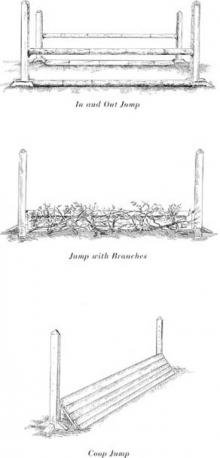 The Georges and the Jewels
The Georges and the Jewels Pie in the Sky: Book Four of the Horses of Oak Valley Ranch
Pie in the Sky: Book Four of the Horses of Oak Valley Ranch Duplicate Keys
Duplicate Keys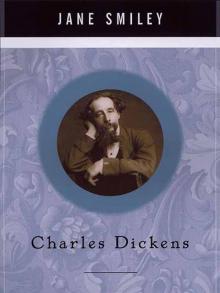 Charles Dickens
Charles Dickens Good Faith
Good Faith Private Life
Private Life A Thousand Acres: A Novel
A Thousand Acres: A Novel The Greenlanders
The Greenlanders Ten Days in the Hills
Ten Days in the Hills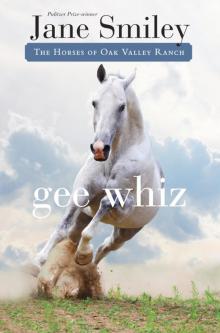 Gee Whiz: Book Five of the Horses of Oak Valley Ranch
Gee Whiz: Book Five of the Horses of Oak Valley Ranch A Thousand Acres
A Thousand Acres The All-True Travels and Adventures of Lidie Newton
The All-True Travels and Adventures of Lidie Newton Ordinary Love and Good Will
Ordinary Love and Good Will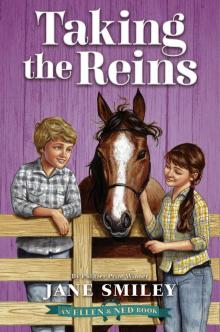 Taking the Reins (An Ellen & Ned Book)
Taking the Reins (An Ellen & Ned Book) The Man Who Invented the Computer
The Man Who Invented the Computer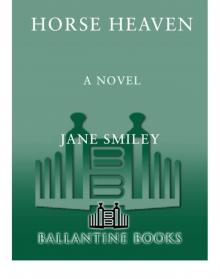 Horse Heaven
Horse Heaven The Age of Grief
The Age of Grief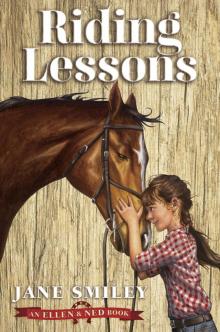 Riding Lessons
Riding Lessons Perestroika in Paris
Perestroika in Paris A Good Horse: Book Two of the Horses of Oak Valley Ranch
A Good Horse: Book Two of the Horses of Oak Valley Ranch Saddles & Secrets (An Ellen & Ned Book)
Saddles & Secrets (An Ellen & Ned Book) Some Luck: A Novel
Some Luck: A Novel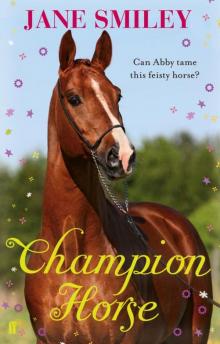 Champion Horse
Champion Horse Some Luck
Some Luck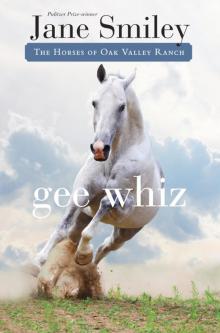 Gee Whiz
Gee Whiz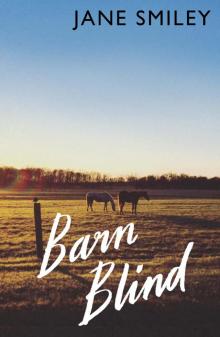 Barn Blind
Barn Blind A Thousand Acres (1992 Pulitzer Prize)
A Thousand Acres (1992 Pulitzer Prize) Pie in the Sky
Pie in the Sky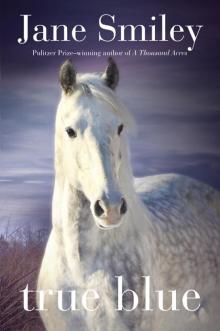 True Blue
True Blue A Thousand Acres_A Novel
A Thousand Acres_A Novel A Good Horse
A Good Horse